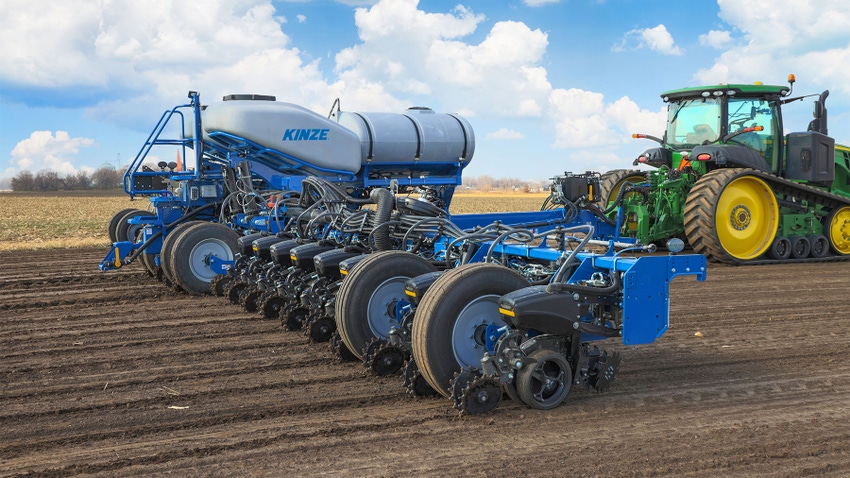
The planter is hooked to the tractor. But is it ready for the field? Even if you think it is, industry experts advise one more thorough inspection. Go over each row unit with a fine-tooth comb.
What should you look for? Here are tips from three specialists from three ag companies that might help. The panel includes Ryan Hogness, Vaderstad product specialist for planters; Brad Niensteadt, Kinze lead product specialist; and Josh Stoller, Precision Planting planter specialist.
All three experts recommend starting at the front of the row unit and working to the rear. Here are their comments regarding parallel linkage, row cleaners, no-till coulters, gauge wheels, disk openers, seed tubes, seed meters and closing wheels.
Hogness: Parallel linkage, where the row unit attaches to the toolbar, is the first place to look. Ideally, there shouldn’t be any slippage.
Niensteadt: If there is too much play, the row unit will sway some. It should be tight.
Stoller: There should be zero wiggle when you grab the row unit. More than one-half-inch wiggle should mean it’s time to replace the bars. If there is play, maybe a nut is loose. If you take a bolt out and look, is the hole egg-shaped from wear? That may allow up-and-down play.
Niensteadt: Look for ground wear on coulters. Also look at bearings. Are bearings on residue wheels still solid?
Stoller: Evaluate wear on residue wheels and coulters. Can they go another year? Do they roll freely?
Hogness: Is the cutting edge still sharp on disc openers? Measure remaining blade diameter. Once there is half-inch wear and diameter is down to 14.5 inches, replace them.
Niensteadt: Check gauge wheels for play. Do they need shims? Check the seed tube guard where the trench forms. Is it in good shape?
Stoller: If that guard at the bottom is worn and the trench is too narrow, seed set for 2 inches deep may only be 1.5 inches deep. Also, check Keeton seed firmers. They can get soft at the neck, and it may affect trench shape. They might need replacing. Is there play in gauge wheel arms? If so, shim them up.
Hogness: Vaderstad planters use a pressure seed distribution system rather than vacuum. If the operator practices due diligence in maintenance, you can plant with confidence. The main element to check on these meters is the seal. Is it still sealing properly?
Niensteadt: Whether you have finger pickup or vacuum units, putting them on a test stand pays. If possible, test with three or four common seed lots you will plant. If you have a 2019 or newer Kinze planter with electric drives, the BlueDrive feature lets you test meters on the planter.
Hogness: Closing wheels should trail behind the seed trench exactly in line. If bearings are still good, there should be no catches when wheels turn.
Niensteadt: The story has not changed. They should be exactly in line with disc openers over the seed trench.
Stoller: Closing wheel alignment is key. Do they line up exactly with double discs? Grab the closing wheels from behind and shake them. If there is play, address it.
Read more about:
PlantersAbout the Author(s)
You May Also Like




